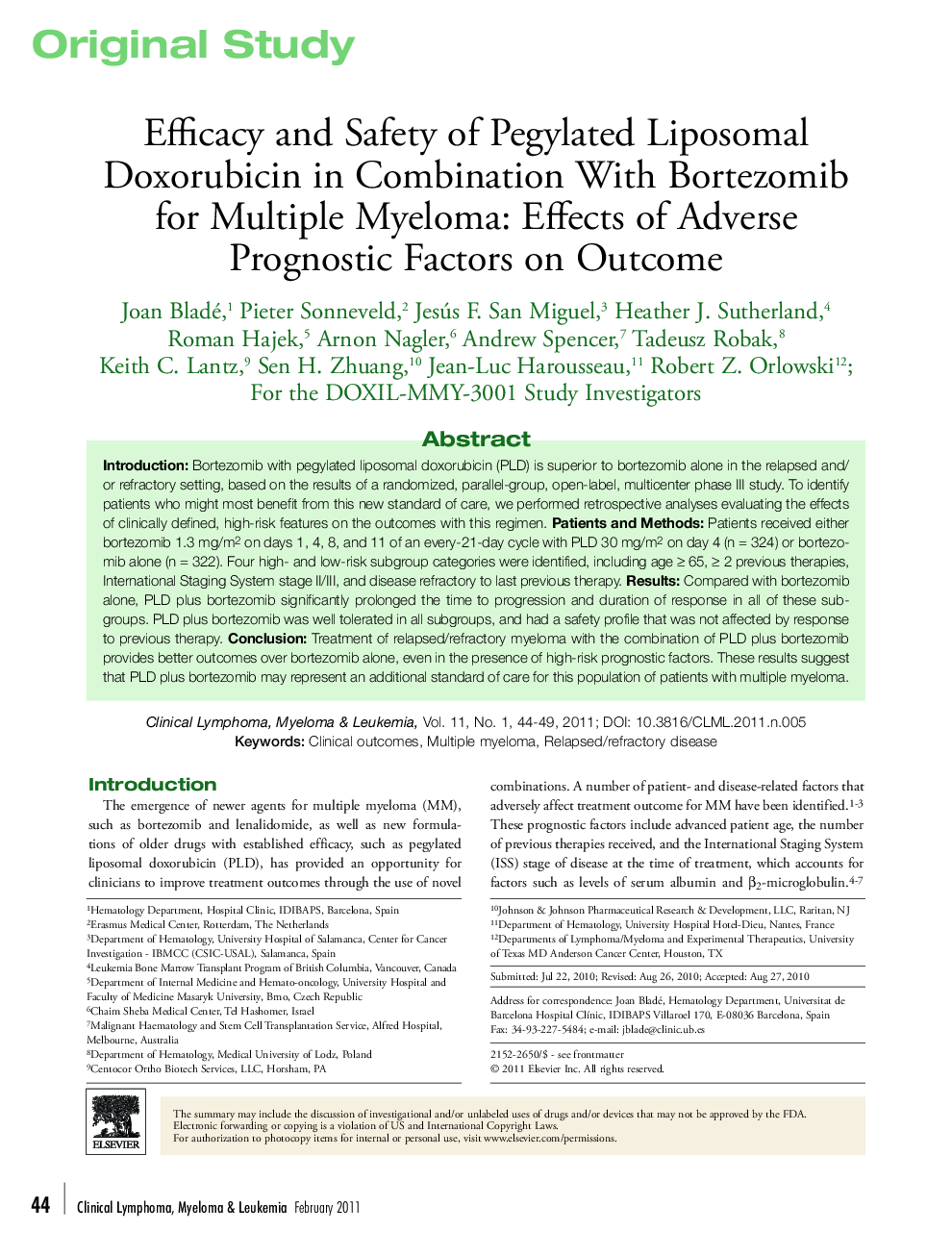| Article ID | Journal | Published Year | Pages | File Type |
|---|---|---|---|---|
| 2755089 | Clinical Lymphoma Myeloma and Leukemia | 2011 | 6 Pages |
Introduction:Bortezomib with pegylated liposomal doxorubicin (PLD) is superior to bortezomib alone in the relapsed and/or refractory setting, based on the results of a randomized, parallel-group, open-label, multicenter phase III study. To identify patients who might most benefit from this new standard of care, we performed retrospective analyses evaluating the effects of clinically defined, high-risk features on the outcomes with this regimen.Patients and Methods:Patients received either bortezomib 1.3 mg/m2 on days 1, 4, 8, and 11 of an every-21-day cycle with PLD 30 mg/m2 on day 4 (n = 324) or bortezomib alone (n = 322). Four high- and low-risk subgroup categories were identified, including age ≥ 65, ≥ 2 previous therapies, International Staging System stage II/III, and disease refractory to last previous therapy.Results:Compared with bortezomib alone, PLD plus bortezomib significantly prolonged the time to progression and duration of response in all of these subgroups. PLD plus bortezomib was well tolerated in all subgroups, and had a safety profile that was not affected by response to previous therapy.Conclusion:Treatment of relapsed/refractory myeloma with the combination of PLD plus bortezomib provides better outcomes over bortezomib alone, even in the presence of high-risk prognostic factors. These results suggest that PLD plus bortezomib may represent an additional standard of care for this population of patients with multiple myeloma.
